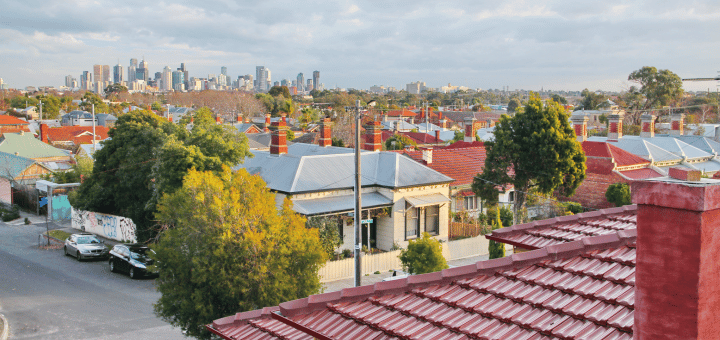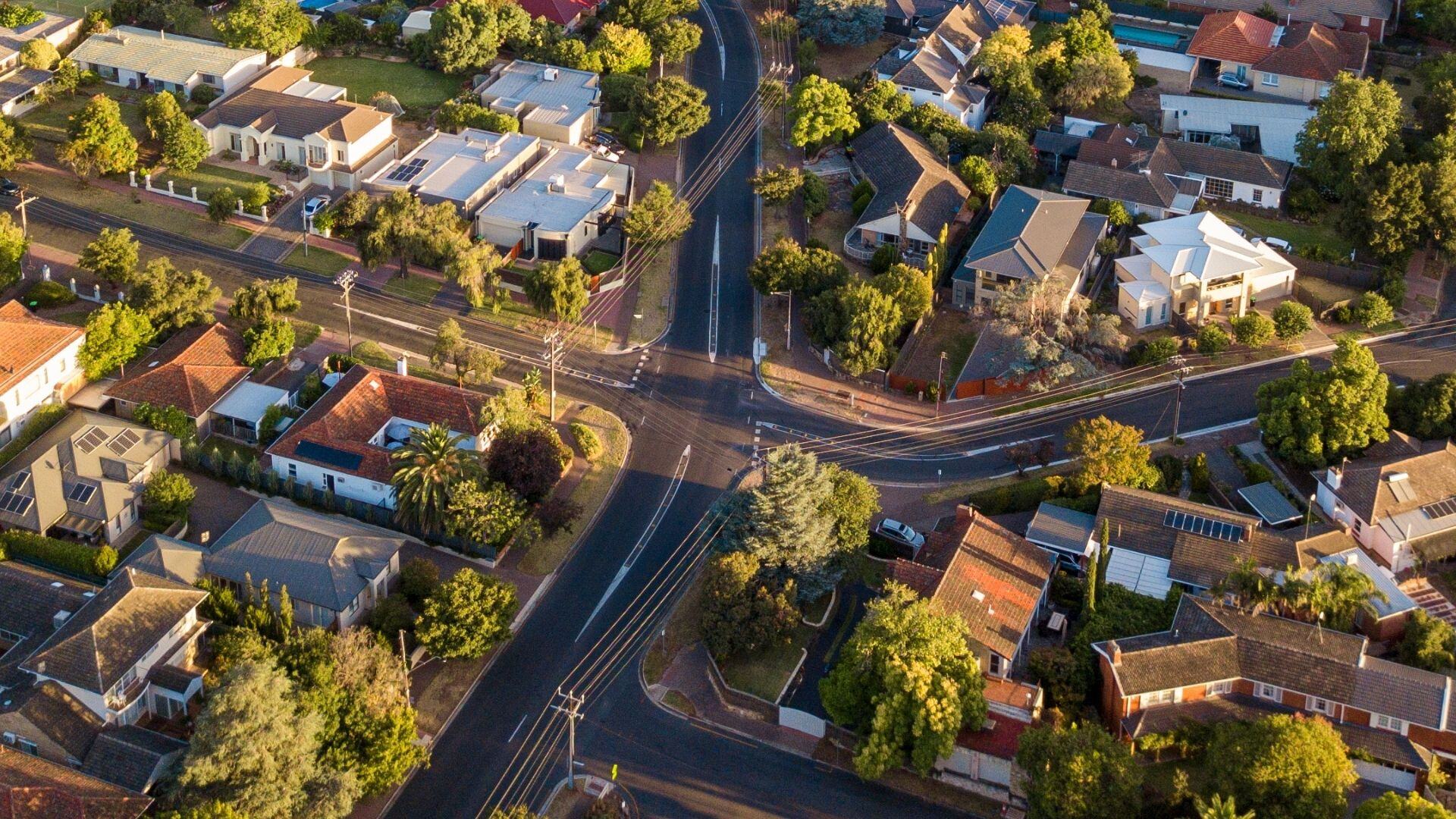Recently Michael Koziol, writing in the Sydney Morning Herald, argued that Melbourne has planned better for growth than Sydney.
As Melbourne pushes towards 7.5 million by the middle of the century, the Victorian government, as outlined recently in ‘Plan Melbourne’, has set itself the goal of building 1.6 million new dwellings by 2051 – two thirds of them apartments.
Sydney however, itself pushing towards 7 million, isn’t doing enough to consolidate, or build enough new homes for everyone who wants to live there, he argued.
In our e-book Predicting the Growth Suburbs of the Future, we analyse recent patterns of dwelling and population growth in both Sydney and Melbourne.
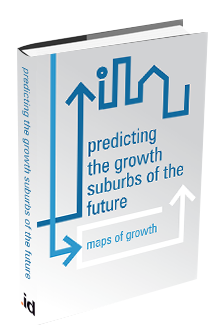
While the data offer some support for Koizol’s contention on the face of it, it is a simplification to suggest that differences between Sydney and Melbourne are simply about differences in planning, preference or political will.
Sydney’s development has largely been shaped by topographical and historical constraints. The Blue Mountains, the Royal National Park, the Hawkesbury-Nepean basin, Ku-ring-gai Chase and other water catchments have hemmed Sydney in and determined its current shape and form. In comparison, Melbourne’s geography is a relatively open slate.
It is these topographical constraints that mean that Sydney’s growth in recent years has tended to be more focused on urban consolidation than it has in Melbourne.
By our classification, only 40% of new housing development between 2006 and 2011 was in what we called the ‘outer suburbs’ of Sydney. This compares with a figure of 57% in Melbourne.
This result reflects strong growth in Sydney’s inner-city ‘growth corridors’ – LGAs like Canada Bay, Auburn, Parramatta and Strathfield – largely driven by apartment construction on the fringes of major activity centres, and brownfield, infill development.
We also find that while Sydney has been able to focus recent development in existing suburbs, it does appear that total dwelling construction is still lagging behind population growth.
In the 1996-2001 inter-censual period, Sydney added 110,000 new homes to the housing stock. Between 2006 and 2011 however, Sydney only added 72,000 dwellings. (Figure 1.)
Figure 1. New housing stock in Sydney and Melbourne 1996 – 2011
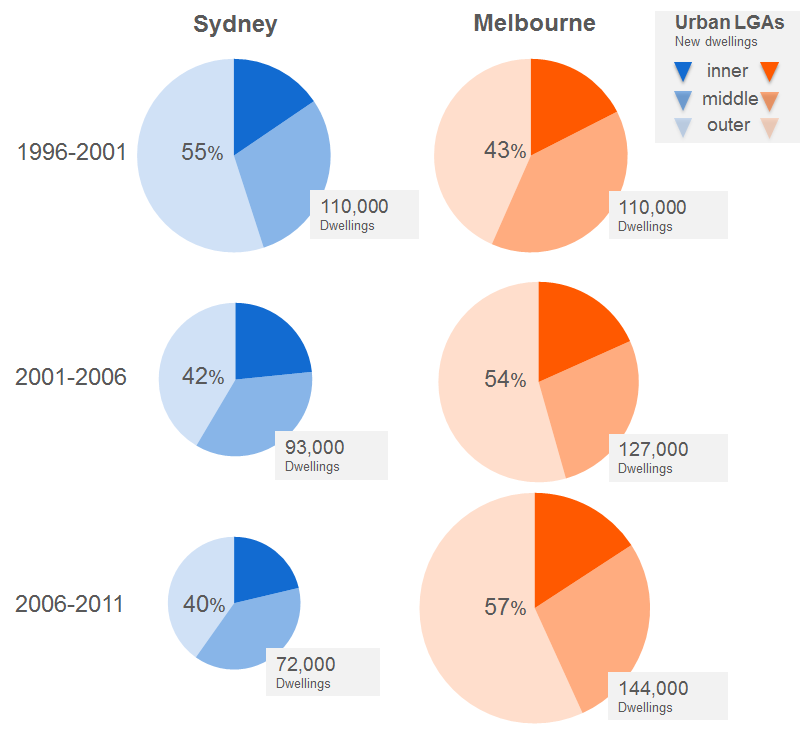
This is about half the number of homes that were built in Melbourne at the same time. To be fair though, Melbourne’s population was growing much more rapidly – through international and interstate migration – through this period than Sydney’s.
In figure 2 we compare population growth with dwelling approvals data. In the second half of the 2000s, there was a clear mismatch, with the population increasing and the number of new dwellings approved each year declining.
Figure 2: Sydney population growth vs dwelling approvals
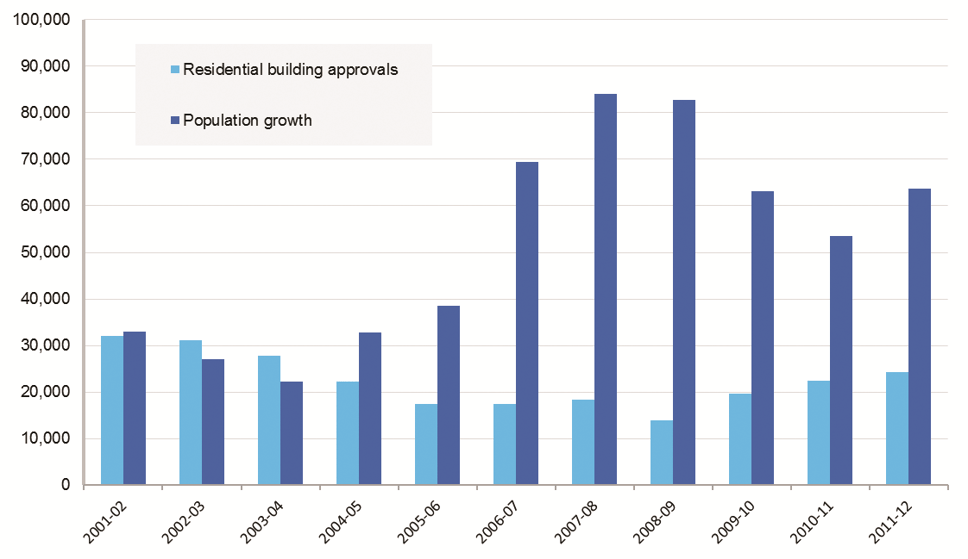
Again, this doesn’t necessarily reflect any difference in planning preference or philosophy between Sydney and Melbourne. Melbourne’s dwelling rate has also lagged population growth (though perhaps to a lesser degree), and more likely reflects tighter lending environments following the GFC. We’ve also noticed a trend towards larger household sizes (share-houses, kids staying at home longer), as house prices become more and more expensive. In terms of housing, there seems to be a trend in our cities towards getting by with less. We’ll be researching and writing more on this topic soon.
Building approvals in Sydney have trended higher in recent times, with ABS figures pointing to 29,000 homes in 2012/13, and trending towards 39,000 in 2013/14. It does seem that there is some kind of catch-up happening.
In sum, the claim that “Melbourne has planned for better growth than Sydney” is a something of a stretch. Both cities face substantial challenges in accommodating rapidly growing populations, and Sydney’s unique topographical constraints compound these challenges.
We would also point out that it was not so long ago that the development industry was entirely focused on greenfield development, and urban consolidation is a relatively recent trend. In this sense, recent efforts to bulk up the existing suburbs of Sydney and Melbourne are to be welcomed, and are likely to accelerate in the years ahead.
We hope that the analysis presented in our free e-book ‘Predicting the Growth Suburbs of the Future’ will help governments and businesses alike understand how our cities got where we are, and where we’re going. At .id, we passionately believe in the role reliable data and clear analysis has to play in building better communities and better cities.
.id is a team of population experts, who use a unique combination of online tools and consulting to help organisations decide where and when to locate their facilities and services, to meet the needs of changing populations. Access our free demographic resources here.




